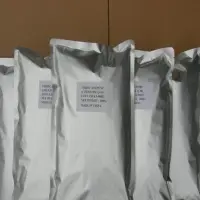-
Categories
-
Pharmaceutical Intermediates
-
Active Pharmaceutical Ingredients
-
Food Additives
- Industrial Coatings
- Agrochemicals
- Dyes and Pigments
- Surfactant
- Flavors and Fragrances
- Chemical Reagents
- Catalyst and Auxiliary
- Natural Products
- Inorganic Chemistry
-
Organic Chemistry
-
Biochemical Engineering
- Analytical Chemistry
- Cosmetic Ingredient
-
Pharmaceutical Intermediates
Promotion
ECHEMI Mall
Wholesale
Weekly Price
Exhibition
News
-
Trade Service
The Xi Peng team at Peking University and his co-chairmen have made new breakthroughs in the field of living cell super-resolution imaging, opening a new chapter in the long-term observation of the active cell mitochondrial STED (Kired Eli les Randmicroscopy).
the work developed a new mitochondrial dye MitoESq-635, which is 3.4 times less saturated than the traditional ATTO 647N, which is conducive to long-term STED hyper-resolution imaging.
took advantage of this, the work achieved up to 50 minutes of dynamic observation of living cell mitochondria, reached an ultra-high resolution of 35.2 nanometers, and observed the dynamic process of mitochondrial polymerization and division.
published the results online in Nature Communications.
mitochondria are the "power plants" of cells, and their interior is rich in mitochondria for ATP synthesis.
because it has its own independent DNA, it is often considered a model of ancient bacteria invading cells and forming symbiotic relationships.
at the same time, in diseases such as cancer, mitochondrial crucibles also show abnormalities due to metabolic abnormalities.
however, due to the diffraction limit, the traditional microscope has only a resolution of about 300nm and cannot observe fine structures such as mitochondrial crucibles.
STED hyper-resolution technology is suitable for studying mitochondrial crucible structure because of its ultra-high resolution and faster imaging speed.
but STED technology usually requires high light strength for hyperresolution, high toxicity to mitochondria, and common dyes are easily bleached by light.
the new mitochondrial dye MitoESq-635 developed by the project has a lower saturation power, achieving the same resolution only requires a relatively lower STED light intensity, reducing the effect of photobleaching, while having a higher stability, and can maintain a strong fluorescence intensity for long periods of time.
co-location results show that the dye can specifically label mitochondria.
these properties make it one of the best dyes for long-term STED hyper-resolution imaging of live cell mitochondria.
combined with STED super-resolution technology, the
work achieved three-dimensional slice STED imaging, providing a wealth of mitochondrial three-dimensional information.
the dynamic super-resolution observation ability of this technology, and promotes the quantitative analysis of the dynamic process of mitochondria.
as the shooting time increases, the width of the mitochondria becomes larger, the fluorescence intensity decreases slowly, and the image resolution decreases.
team found the appropriate STED irradiating light strength through reasonable quantitative analysis, balancing the parameters of resolution, signal-to-noise ratio, shooting time, and so on.
the project clearly observed the process of mitochondrial polymerization and separation, compared with ordinary confocal microscopes, the technology achieved an ultra-high resolution of 35.2 nanometers, and clearly saw the dynamic changes of mitochondrial crucibles.
also observed the dynamic process of mitochondrial aggregation and separation, which is of great significance to the study of mitochondrial morphology and functional changes.
contrasting images of electron microscopes, the project observed similar mitochondrial structures based on dynamic imaging, further validating the technology's ultra-high resolution. Professor Xi Peng of Peking University,
, mentioned that the goal of imaging technology development is no more than "clear" "fast" "deep" "live" ("light life") four words, this project is under the guidance of these four-word policy, to "clear" "fast" "deep" "living" these four aspects of research breakthrough, to achieve 35.2 nanometers of ultra-high spatial resolution, while reaching 0.66 seconds per frame of high resolution, more than 3 years of dynamic imaging.
the work of the co-first author Yang Xusan is a graduate of Peking University School of Engineering (mentor Xi Peng), currently at Cornell University post-doctoral research;
co-authors are: Xi Peng, Qu Junle (Shenzhen University), Yang Zhigang (Shenzhen University, co-author), Yang Xusan (joint work).
Xipeng's team has been working on the development and application of hyper-resolution technology in recent years, such as: 1) the comprehensive utilization of the photon avalanche and cross-relaxation characteristics of the upper conversion nanoprobe, the realization of the upper conversion of low-power STED, the saturation of less than two orders (Nature 2017); Hole and viral filament imaging (Light 2016); 3) Using Gauss-Bezier light field regulation, the axial depth of STED imaging is increased by an order of magnitude (Laser Photonics Review 2016); 4) the combination of polarization and structural light for fluorescent disputing super-resolution imaging (Light 2016, Nature Communications 2019) and two research highlights from Nature Methods.
these efforts have laid a solid foundation for this work.
.







